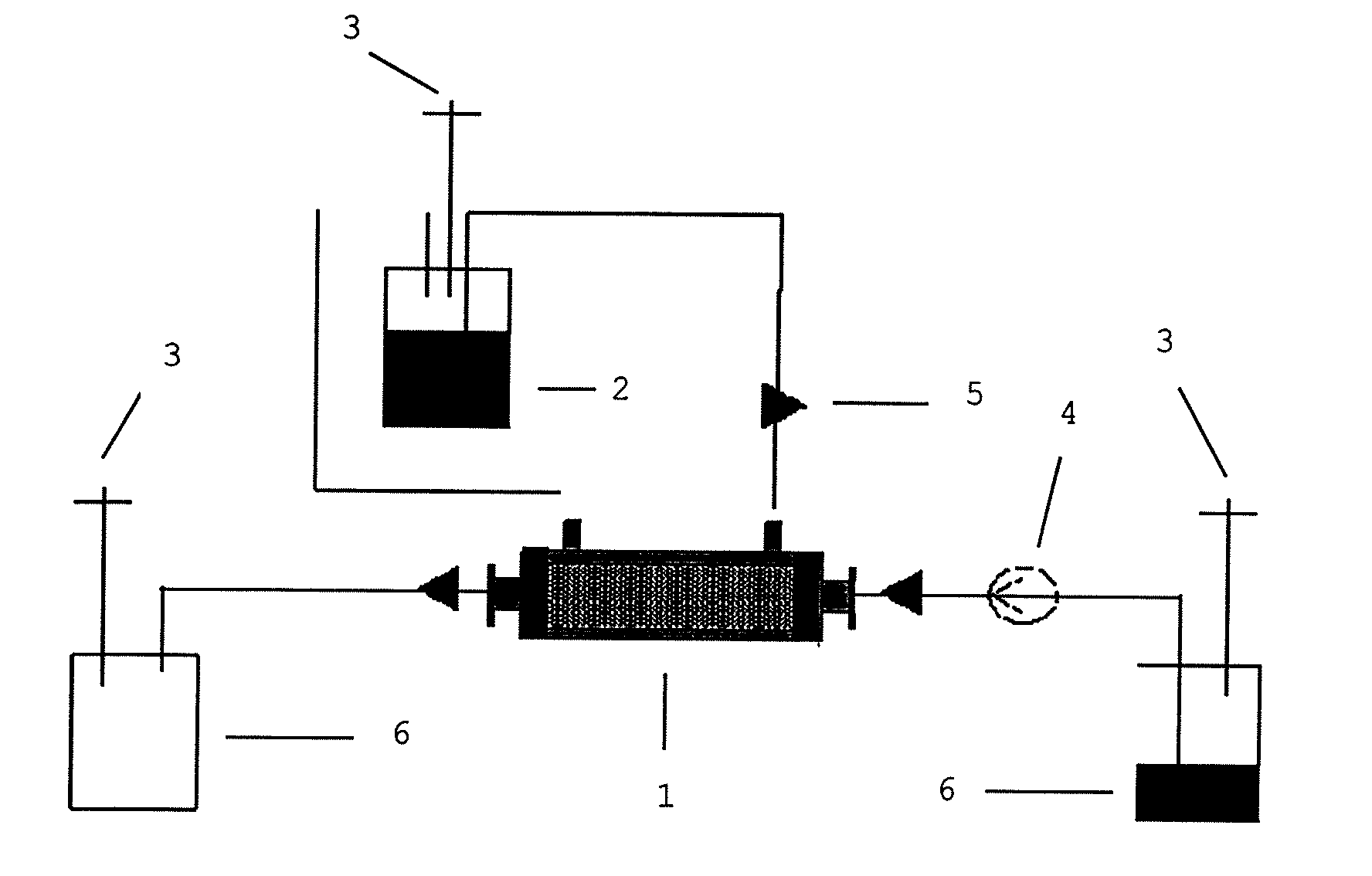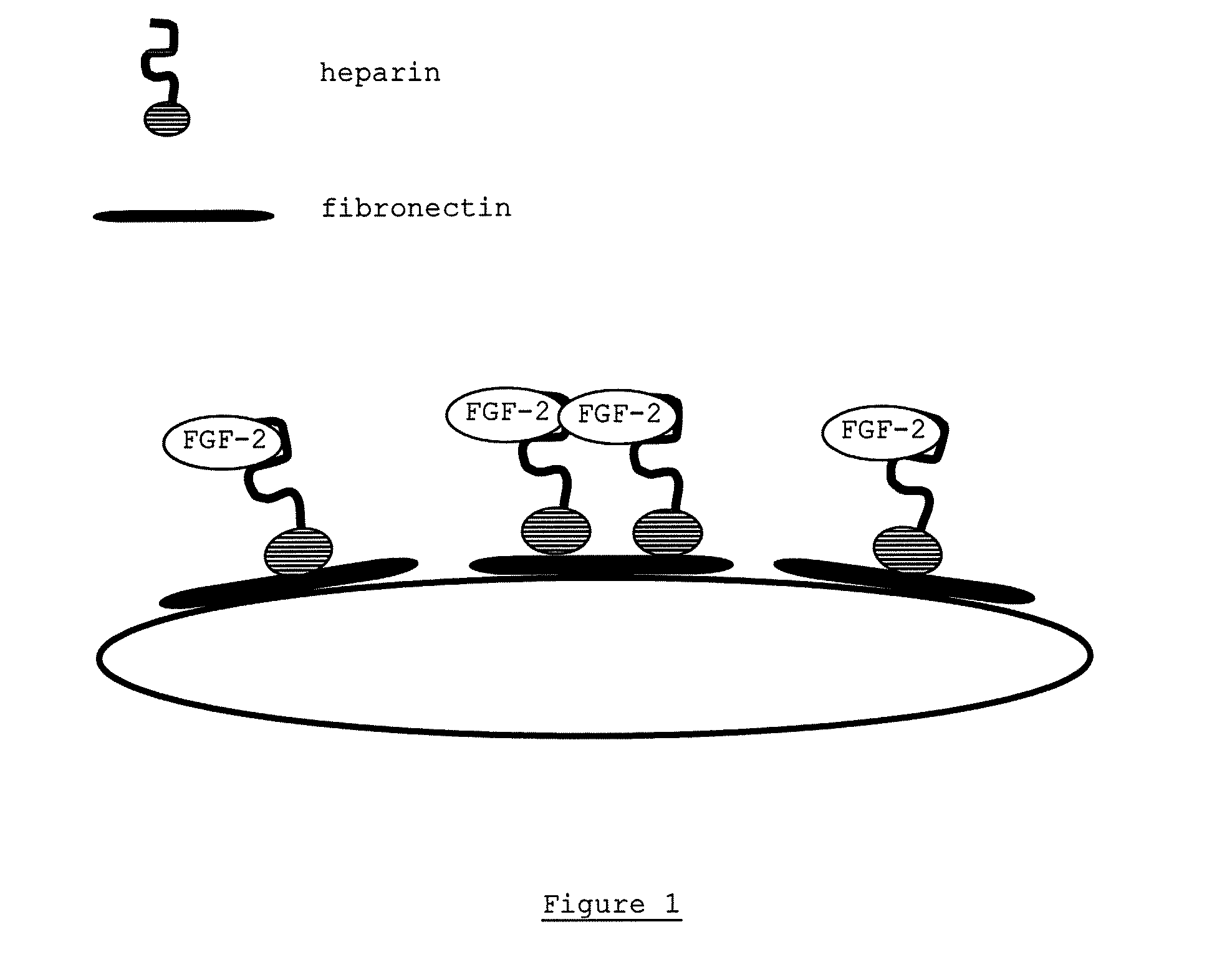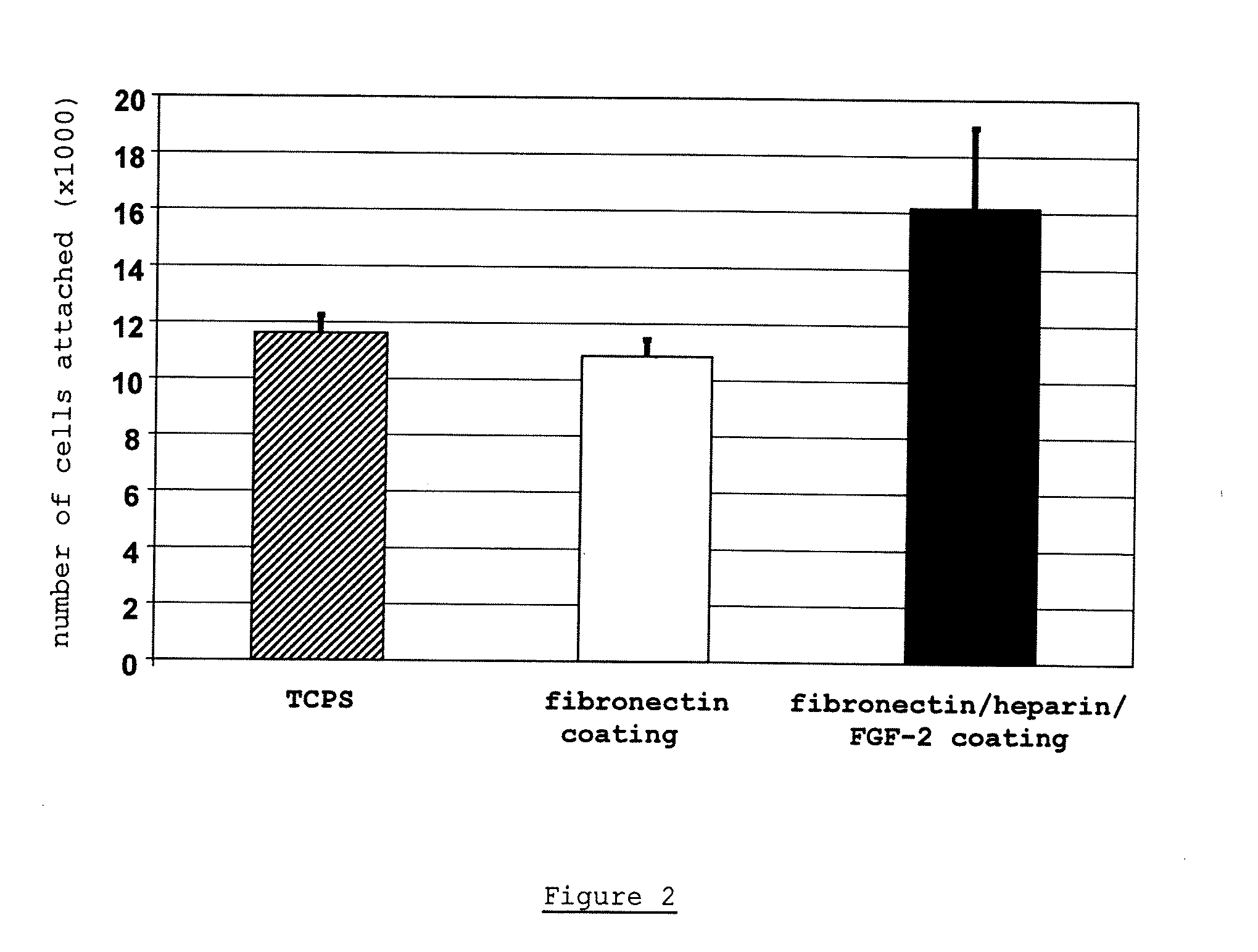Biomimetic membrane for cell expansion
a biomimetic membrane and cell technology, applied in the membrane field, can solve the problems of adverse reactions in patients treated, many cells are not available in any quantity, and cells often lose their ability to differentiate and respond to hormones, and achieve the effect of promoting cell attachmen
- Summary
- Abstract
- Description
- Claims
- Application Information
AI Technical Summary
Benefits of technology
Problems solved by technology
Method used
Image
Examples
example 1
In Situ Modification with Fibronectin (FN), Heparin (Hep) and FGF-2
[0163]The substrate (U9000® from Gambro) was prepared according to the above described method (1.1.4) as a flat sheet membrane. The membrane was modified with a complex comprising 67.5 μg / insert FN, 20 μg / ml Hep and 200 ng / ml FGF-2. Heparin was supplied by ratiopharm in stock solution of 25,000 I.E. in 5 ml corresponding to 33.3 μg / μl. Formation of a complex of heparin, FGF-2 and FN was obtained by incubation over night at 4° C. Prior to coating, flat sheet membrane substrates were washed 3 times with 0.9% NaCl for 10 min at room temperature (2 ml / insert and 4 ml / well) and 2 ml of coating solution was then added for incubation over night at 4° C. The next day, the solution was aspirated and membranes were allowed to dry for about 2 hours before cells were added.
example 2
In Situ Modification with Fibronectin (FN)
[0164]Prior to coating, flat sheet membrane substrates were washed 3 times with 0.9% NaCl for 10 min at room temperature (2 ml / membrane insert and 4 ml / well). Afterwards, 2 ml of a working solution consisting of fibronectin (5 μg / cm2), supplied by Chemicon, and PBS, supplied by GIBCO, was added and incubated over night at 4° C. or 37° C. The next day, the solution was aspirated and membranes were allowed to dry for about 2 hrs before cells were added to inserts.
example 3
Culturing of MSC on Flat Sheet Membranes
(A) Seeding of Cells
[0165]MSC were seeded under previously described conditions (see 1.2).
[0166]FIG. 2 depicts the number of MSC which actually attached to the various surfaces. As can be seen, cells attached best to the membrane which was coated with FN / Hep / FGF-2. They also attached to the controls, TCPS and the membrane with fibronectin coating, however, fewer cells can be found on the control matrices.
[0167]As MSC are adherent cells, that means that they attach to the surface, seeding parameters were number of MSC per cm2 (MSC / cm2), which henceforth is referred to as seeding density) and media composition. Confluence of cells is reached when MSC cover the whole surface. In that case, cells must be detached from the surface and passaged to a new flask. For detachment cell culture media was removed, cells were rinsed with 8 ml PBS (phosphate-buffered saline). Afterwards, wash solution was removed and detachment enzyme was added. Then, cells w...
PUM
 Login to View More
Login to View More Abstract
Description
Claims
Application Information
 Login to View More
Login to View More - R&D
- Intellectual Property
- Life Sciences
- Materials
- Tech Scout
- Unparalleled Data Quality
- Higher Quality Content
- 60% Fewer Hallucinations
Browse by: Latest US Patents, China's latest patents, Technical Efficacy Thesaurus, Application Domain, Technology Topic, Popular Technical Reports.
© 2025 PatSnap. All rights reserved.Legal|Privacy policy|Modern Slavery Act Transparency Statement|Sitemap|About US| Contact US: help@patsnap.com



